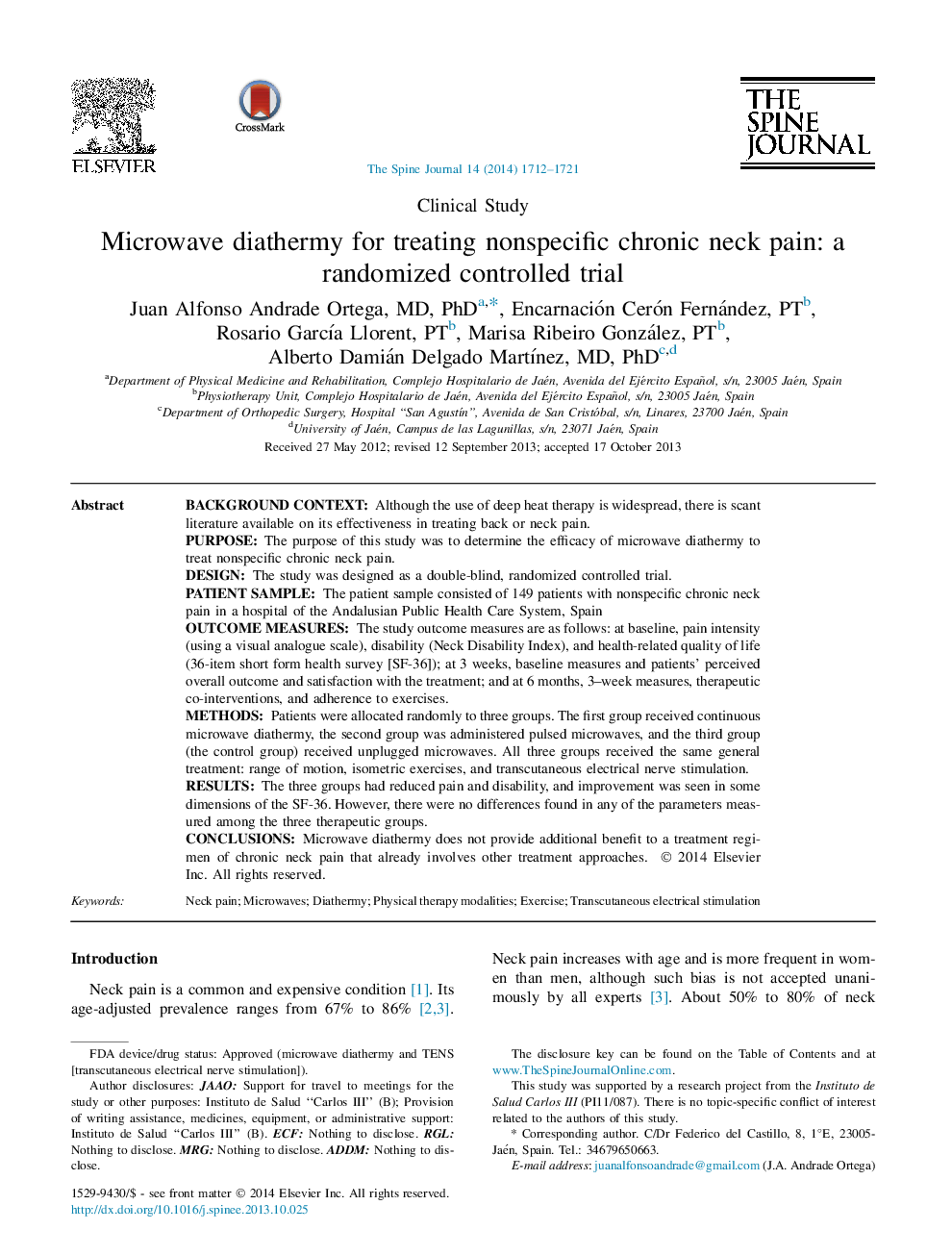| Article ID | Journal | Published Year | Pages | File Type |
|---|---|---|---|---|
| 6212237 | The Spine Journal | 2014 | 10 Pages |
Background contextAlthough the use of deep heat therapy is widespread, there is scant literature available on its effectiveness in treating back or neck pain.PurposeThe purpose of this study was to determine the efficacy of microwave diathermy to treat nonspecific chronic neck pain.DesignThe study was designed as a double-blind, randomized controlled trial.Patient sampleThe patient sample consisted of 149 patients with nonspecific chronic neck pain in a hospital of the Andalusian Public Health Care System, SpainOutcome measuresThe study outcome measures are as follows: at baseline, pain intensity (using a visual analogue scale), disability (Neck Disability Index), and health-related quality of life (36-item short form health survey [SF-36]); at 3 weeks, baseline measures and patients' perceived overall outcome and satisfaction with the treatment; and at 6 months, 3-week measures, therapeutic co-interventions, and adherence to exercises.MethodsPatients were allocated randomly to three groups. The first group received continuous microwave diathermy, the second group was administered pulsed microwaves, and the third group (the control group) received unplugged microwaves. All three groups received the same general treatment: range of motion, isometric exercises, and transcutaneous electrical nerve stimulation.ResultsThe three groups had reduced pain and disability, and improvement was seen in some dimensions of the SF-36. However, there were no differences found in any of the parameters measured among the three therapeutic groups.ConclusionsMicrowave diathermy does not provide additional benefit to a treatment regimen of chronic neck pain that already involves other treatment approaches.
